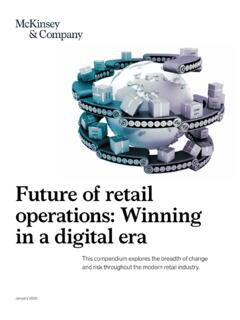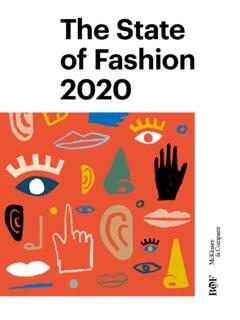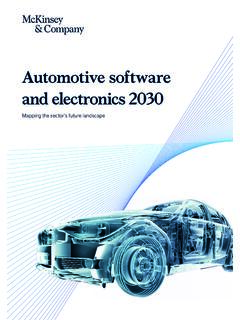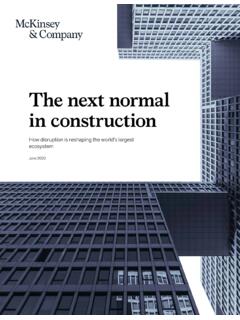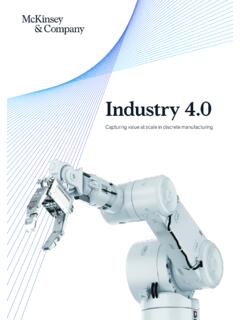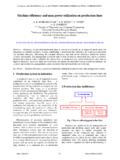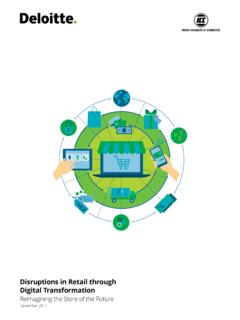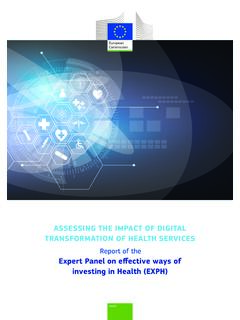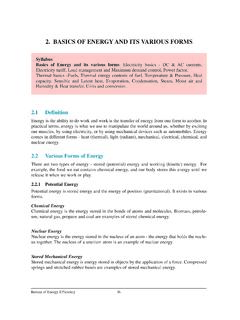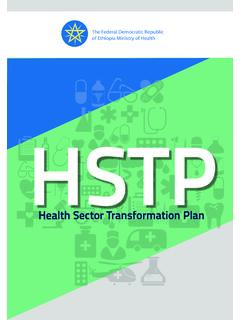Transcription of Leveraging Industrial IoT and ... - McKinsey & Company
1 Leveraging Industrial IoT and advanced technologies for digital transformation How to align business, organization, and technology to capture value at scaleby Andreas Behrendt, Enno de Boer, Tarek Kasah, Bodo Koerber, Niko Mohr, and G rard Richter3 PrefaceThe set of advanced technologies in the manufacturing space is comprised of many digital innovations: advanced analytics, automation, the Industrial Internet of Things (IIoT), Industry , machine learning, artificial intelligence (AI), cloud platforms, and so on.
2 These innovations have the potential to boost the productivity of companies legacy operations. For incumbent companies, these advanced technologies support the creation of all-new, digitally enabled business models and help increase operational efficiencies and the customer experience in production and logistics. Manufacturing enterprises that want to modernize cannot ignore these benefits; several large organizations in this space are already working with these technologies, at least to some the digital technologies listed above, IIoT or Industry , terms used interchangeably in this report, are of particular relevance to manufacturing.
3 Yet while many manufacturing organizations are piloting digital initiatives, very few have managed to scale their IIoT-enabled use cases in a way that achieves significant operational or financial benefits. One of the reasons for this pilot trap is probably that IIoT is often regarded primarily as a technical implementation challenge, with the drive for adoption spearheaded by specialists in information technology (IT) and operational technology (OT) functions. Yet time and again, it becomes apparent that deriving real business gains from IIoT efforts requires top management to create the conditions in which processes across the business can be changed, paving the way for wide-scale, sustainable value creation.
4 For example, connecting production equipment to the internet will allow a Company to reduce downtime through analytics-enabled asset productivity optimization, but if the surrounding business processes aren t modified and also optimized, the value is limited to that particular area. In order to maximize IIoT s value, people and processes must also shift to capture the benefits of those data-driven insights by receiving insights in real time to react faster or by gaining better information to drive more targeted action.
5 This requires the commitment of leadership to ensure that IIoT is not just an IT initiative but an organization-wide effort. Technical obstacles to IIoT at scale exist, too. Many organizations are still wondering, for example, how to overcome the challenges caused by heterogeneous system and application landscapes, or how to analyze which functions should be supported by which systems (for example, product life-cycle management, enterprise resource planning, manufacturing execution, supply-chain management). There is also the question of where those systems should be deployed on the edge, at the manufacturing site, or in the cloud a question that relates to the governance between IT and OT and considers latency and security necessities.
6 Because of these complexities, even companies with a good IIoT track record can be expected to face challenges if they do it alone. Technical IIoT ecosystems are growing and improving by the day. In many cases, collaboration often with players that have high levels of expertise in areas such as analytics, IIoT, and cloud platforms within the Industrial software stack can be a competitive advantage. Beyond the necessity of collaboration, the complexity of the emerging ecosystems prompts questions concerning investment, leadership, and governance.
7 Mastering these complexities requires overcoming the integration challenge between business operations, organization, and technology. In this report, we offer guideposts for driving digital transformations by successfully aligning the business, organization, and technology spheres to help manufacturing and technology leaders successfully navigate the IIoT landscape and position their organizations to reap the full set of its benefits. 4 ContentsIntroduction 6 Part A.
8 Industry trends for a promising perspective on digital manufacturing 111 A brief outline of technological and impact-related developments in the digital manufacturing space Technology trends are rather promising Leveraging an IIoT-enabled backbone, the plants in the Global Lighthouse Network achieve significant results in their performance metrics 132 Manufacturing companies should continue to commit to digital innovation, and reassess their digital initiatives 17 Part B: A framework for success in IIoT-based value capture at scale 211 Business (Manufacturing) Use-case identification and prioritization 25 Step 1: Generate a comprehensive list of use cases in a combined top-down and bottom-up manner 25 Step 2: Catalog, qualify, and prioritize use cases 25 Step 3: Set up lighthouse cases for master blueprints Plant rollout and enablement 28 Step 1: Set up a rollout that is value driven and pursues impact 28 Step 2.
9 Start gathering and aggregating data, conducting important activities in parallel 30 Step 3: Establish the processes and collaboration that enable the required rollout 312 Organization Value capture: Change and performance management 32 Step 1: Define an overall road map of the IIoT transformation and use-case target values 32 Step 2: Set up a value-capture organization, model, and mechanism 32 Step 3: Implement consistent deviation management Capability building and a new way of working 33 Step 1: Establish structural organizational changes and implement new governance and a new way of working 33 Step 2: Identify and fill the skills gap 36 Step 3: Manage role transitions and implement a change process to support a mindset shift across hierarchy levels 3753 Technology IIoT and data infrastructure: Core platform design (including IT-OT cybersecurity) 40 Step 1: Fully assess the current brownfield setup in both OT and IT 46 Step 2.
10 Create the future target architecture to enable the use case 48 Step 3: Effectively manage cybersecurity challenges in IT-OT convergence 55 Step 4: Select a partner rather than a vendor to help implement the platform IIoT platform: The cloud imperative in manufacturing 59 Step 1: Make the cloud pay off in the short term 62 Step 2: Tightly manage and control the cloud transformation 62 Step 3: Set up an infrastructure team that can operate much like an app development team Tech ecosystem 64 Step 1: Understand the key elements of a sustainable ecosystem 65 Step 2: Choose the right partners, with a view to achieving balanced partner diversity for the platform-enabled ecosystem 65 Step 3: Implement business development teams as a structure to manage the complex ecosystem and ensure agility 67 Outlook.
